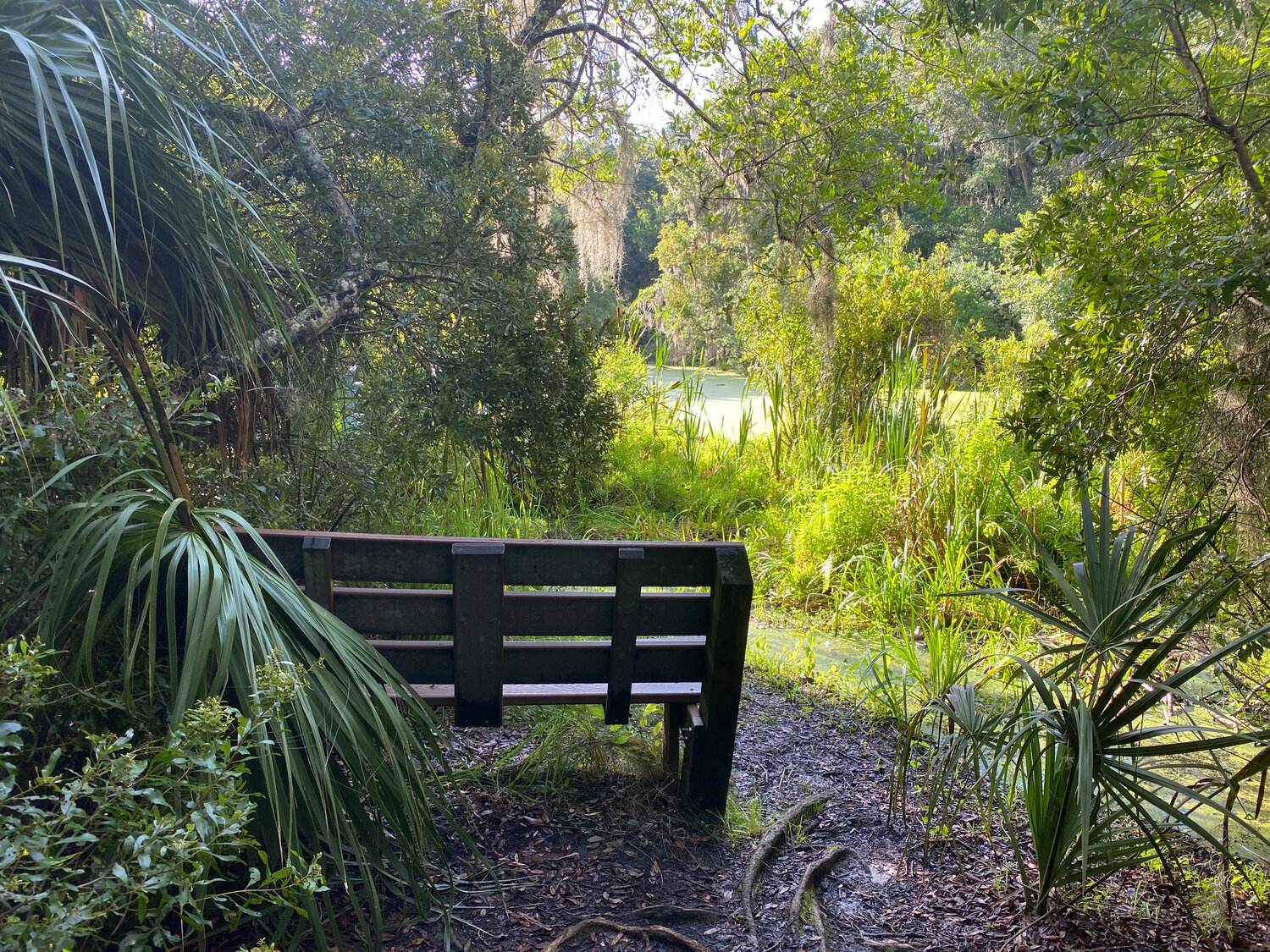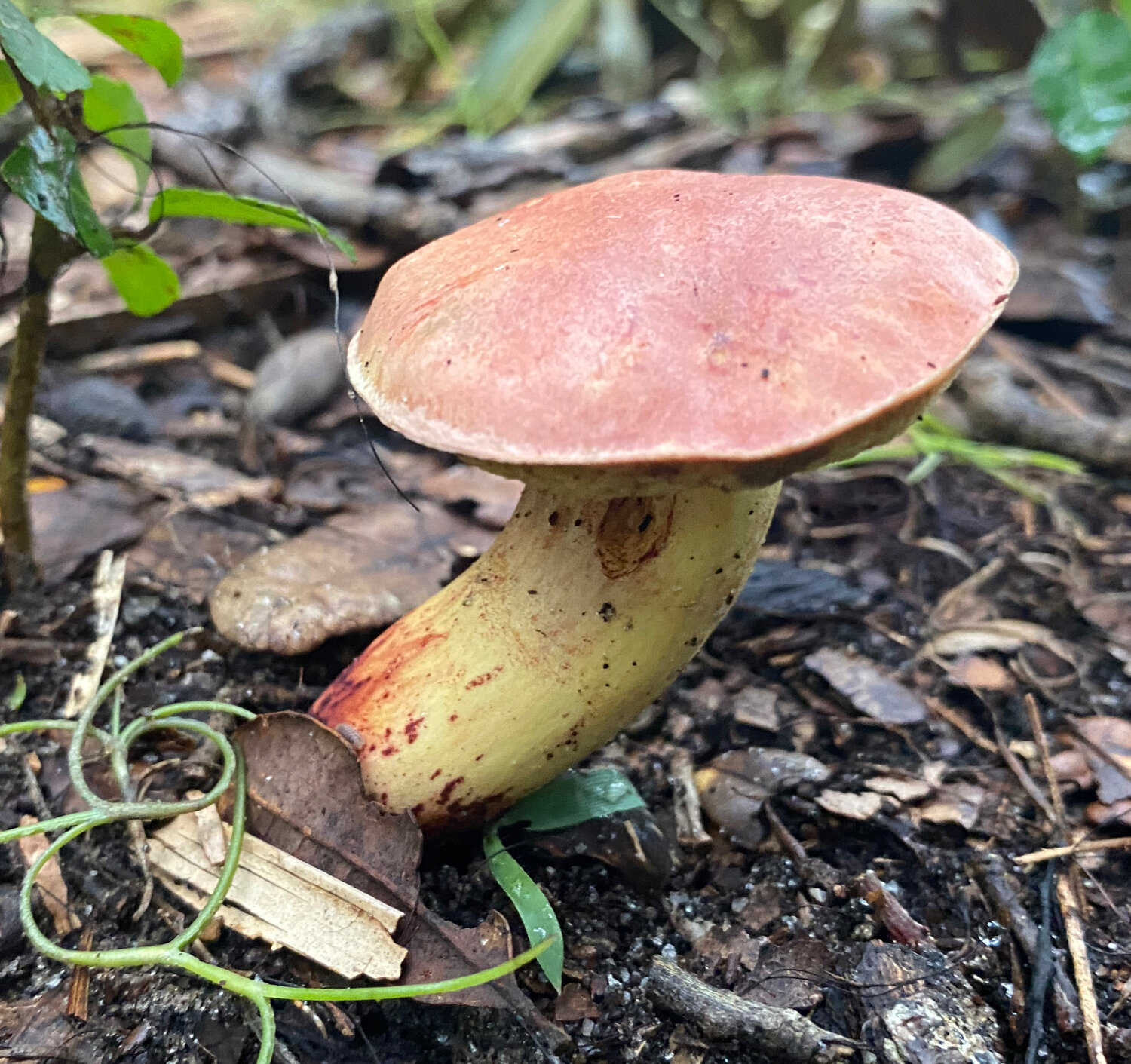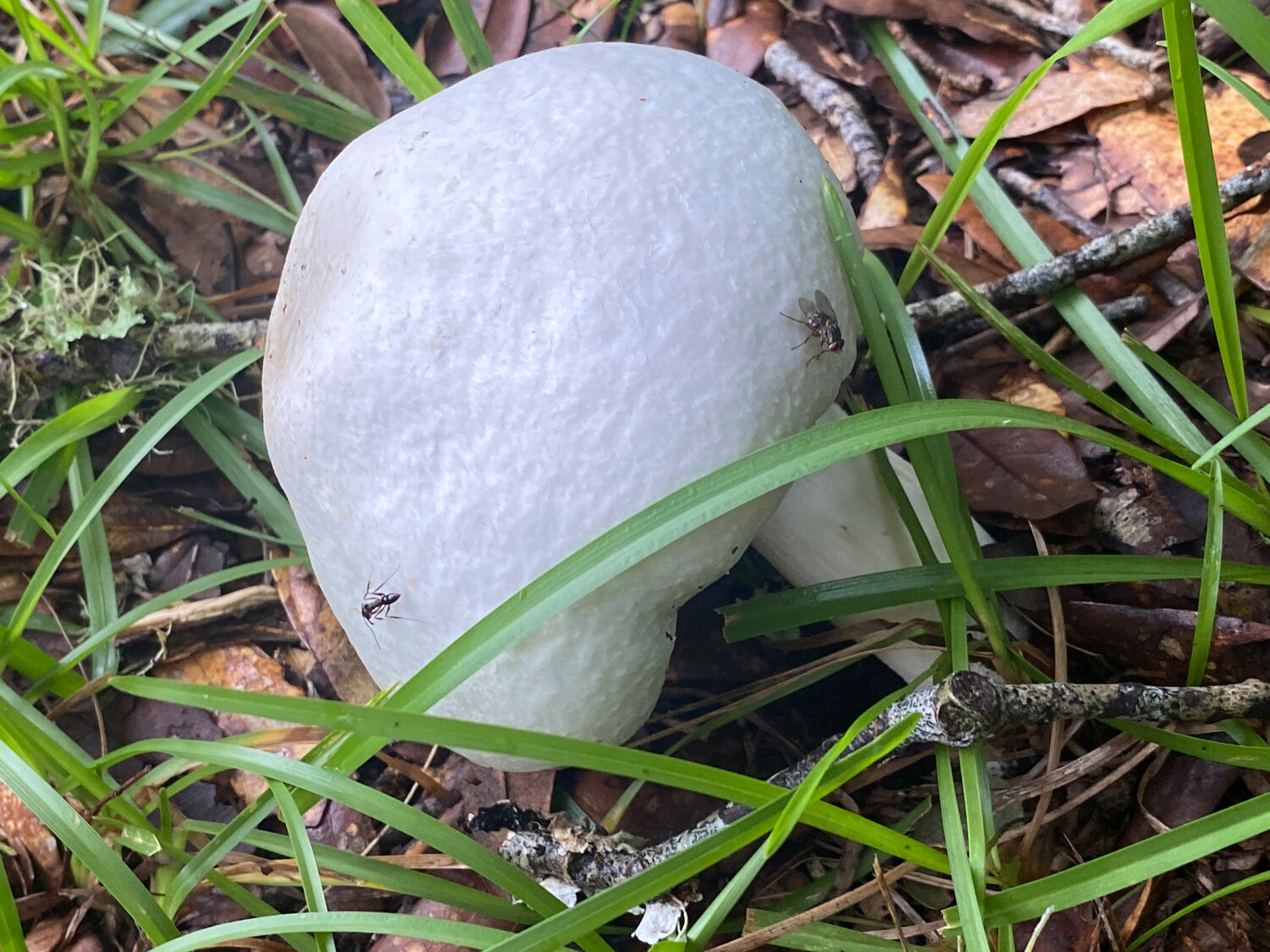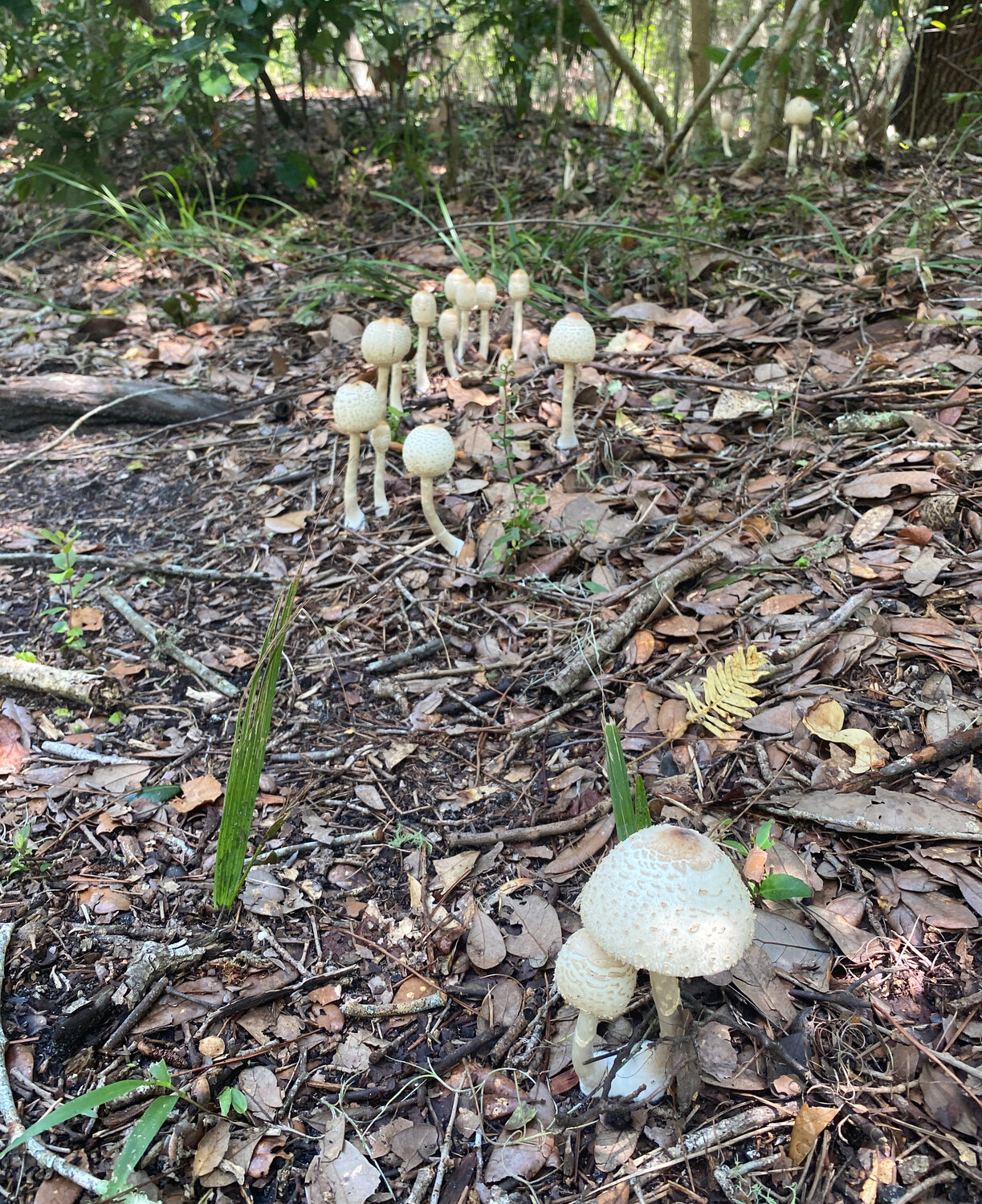Frogs and Toadstools
A few weeks ago Tropical Storm Debby skirted us and we were spared the high winds and storm surges that were predicted when the storm headed north of us. But that’s not to say it didn’t influence the nature around us. For some organisms in our natural world the rains sparked a life-changing event. Mushrooms and frogs came to life where we could see and/or hear them once again.
It was the mushrooms that Bucko and I first noticed. On our usual daily drive through Fort Clinch State Park we started noticing white mushrooms that popped up overnight along the main park road. For a couple of days, these charming “toadstools” brightened up our drive, and we stopped to photograph them a number of times. Although I did not manage to photograph their undersides, where their distinctive identifying characteristics lie, from existing evidence, my mushroom specialist friend Deb Viess-Rust, in California, was fairly certain they were a type of boletes, a common group of mushrooms worldwide. Some of these are said to be edible, but no way am I delving into this shady area that I know little about. I am happy just admiring them and letting others traveling that same park road enjoy them as well.
During this brief period of fruiting, these mushrooms are highly visible on the forest floor, but they are there year-round, underground, with their filaments inextricably living in a symbiotic association with the roots of trees in the forest. After heavy rains like we recently had, the fungus fruits into mushrooms at the surface, where spores they shed will enter the soil, producing new fungi underground.
When we saw the mushrooms along the road, I got inspired to brave the heat and humidity to wander a bit further into the woods. Along the path to the lighthouse overlook, I found more mushrooms, this time with beautiful pinkish caps and stems, most likely more boletes of a different species, I was told.
On a bit longer expedition, I wandered around the Willow Pond trails seeking more mushrooms. But mostly, I found a variety of colorful lichens and fungi growing on rotting logs. Although I didn’t even attempt to identify these, I admired their form and beauty as they set to work decomposing their substrate into fertile forest soil. And the walk around the Willow Pond trails was wonderful in and of itself. For some fortuitous reason, the insects were not biting me, and the air was cool enough to linger. I spent a long time on the bench overlooking a pond, just listening to the sounds of the life in the woods around me—the rustle of squirrels, the call of a jay, the tapping of woodpeckers, the occasional bubbles in the pond created by some pond resident.
And it wasn’t only mushrooms that sprang to our attention after these heavy rains. Heavy rainfall that makes our environment wet is the cue for frogs and toads to come to life in their own reproductive quest. Although many species of these amphibians live mostly hidden lives in the damp forest litter or among the leaves, rains open up the whole environment to these creatures that need dampness to survive. It is time to mate! And to attract mates a number of frogs and toads call loudly to find their partners. At times, this combined chorus of frog calls can be a cacophony of noise, enough to disturb one’s sleep, even with windows closed.
For the uninformed, this nocturnal, loud continuing noise can conjure up all sorts of explanations. One friend of mine, for instance, was convinced there was a badger yelling all night in her yard for a couple of nights running and she was afraid to go out at night, fearing for her life from an attack from this dangerous creature suddenly screaming in her backyard. When she recorded the sounds and compared them to sounds a badger might make, she was convinced that was the culprit, despite my certainty that badgers do not live in the Southeast U.S. Eventually a visit to her home convinced her that no, the six-inch wide hole in the ground that also appeared around the same time was not a badger hole (fyi, their holes are much larger than this), and was most likely an armadillo. And when we perused this website together she agreed it was probably frogs that she heard. It was a relief for her, no doubt!
This may have been our most exciting rain-induced show for the season, but who knows? Keep your eyes and ears open and just maybe this will all happen again before our rainy season comes to an end. Isn’t nature grand?
Pat Foster-Turley, Ph.D., is a zoologist on Amelia Island. She welcomes your nature questions and observations. [email protected].













